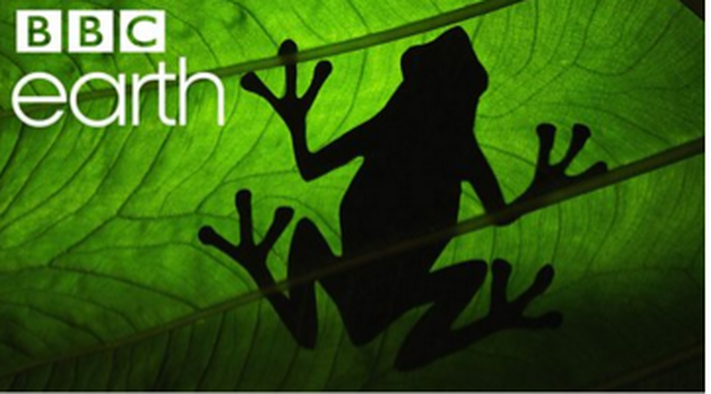|
By: Tana Hoffman As video marketing becomes increasingly popular, it can be difficult to determine which content marketing tactics are helping filmmakers and television networks cut through the noise. Consumers are being inundated with video content on a variety of platforms, with subjects ranging from stunts to celebrities, and they are looking for stories that will entertain them, teach them, or make them feel good. Wildlife networks and filmmakers face the same challenges. As BBC Earth’s director Jo Sermon so eloquently stated in her panel at the Jackson Hole Conservation Summit this week, “People are sleepwalking through nature. It’s our responsibility to wake them up.” I sat down with Jo and BBC’s Creative Director Neil Nightingale to find out what marketing strategies are working for one of the world’s leading producers of highly acclaimed, award-winning natural history documentaries, and what other wildlife film professionals can learn from these successes: What should content producers be focusing on right now to increase their reach? Jo: Fish where the fish are. If the consumers aren’t coming to you naturally, you have to go and help them out. That’s what we’ve really learned with the social media that we’ve done. That’s the point of using collaborators. If we want to speak to a particularly younger consumer than we would typically speak to, we collaborate with someone like Ze Frank. He brings our age reach right down because he’s so cool. He speaks to the type of people that we yearn to speak to. BBC Earth’s collaboration with Ze Frank helped the network reach a younger audience they could not speak to before. What campaigns have been the most successful for BBC Earth? Jo: Social media is wonderful and shortform video is wonderful for invading popular culture. You are fishing where the fish are. Half of our effort (not literally) is aimed at building viewership of our long form content. One example is the pufferfish sequence which got 69 million hits on Facebook—a sequence of this lovely pufferfish building this amazing sand structure on the base of the ocean floor to attract a partner. The intention was that it would drive traffic to the Life Story series. The call to action was to tune in and experience the full series. This sequence from BBC’s series Life Story went viral on Facebook and helped drive viewers to watch the full series on the network. The other reason we like short form video so much is because it enables us to reach different group of people.
Neil: Exactly. A lot of people have seen that pufferfish on YouTube who wouldn’t have necessarily come to the 60 minute documentary so we get to reach a different audience. We’re partly marketing content but also marketing ourselves and reaching different audiences. Often we’ll also drive people to our website rather than asking them to tune in. Our website has new stories every day and our shortform video is also bringing people to that. What are the key performance indicators that your team focuses on? Jo: People more important than me look at the views and the reach, whereas what matters to us is the shares because then you’re really engaging your consumer. Neil: Another thing: when we started a YouTube channel with Google, they couldn’t believe the length of time people watched our videos because it was several times the average (I think the average was 7 seconds). That was a metric we didn’t really understand when we got into short form video and it was a metric we scored really really high on. So that’s something that we look at now to see what really engages people. Is it better to post your content everywhere or develop a marketing strategy that keeps all of your content exclusively in one place? Jo: We’ve been indoctrinated to be generous. The way to get your content out there is to promote it. Share it. There are certain instances where we won’t do that. For example, there is a particular newspaper in the UK that will ask to feature stories that they want claim as their own and include links. So we won’t share that. We protect the ones that we really need to dial and we’re more generous with the bulk of what we produce. Somebody once said to me that what we’re doing in this new media word is ruthlessly working with all the people who can further our ends but also keep our brands absolutely sacrosanct. It’s an incredible balancing act. Sometimes you make the right decisions and sometimes you don’t. We’re all learning all the time. Where is content marketing and short form video headed? Jo: For me, content=marketing=PR. It’s all exactly the same thing now. Neil runs our production crew and I’m a marketeer. Our worlds just completely converged and now we are one in the same. I think it’s a brilliant thing. A good idea can come from anywhere: marketing, production, or it could be from a consumer. Advice for the up and comers trying to get eyes on their content? Neil: Major on your strengths and your passions. Don’t try to do everything. Do what you do well. Jo: And be prolific. Keep getting stuff out there. That’s the only way you’ll learn what works and what doesn’t.
1 Comment
|
Archives
March 2024
Categories
All
|
Contact UsJackson Wild
240 S. Glenwood, Suite 102 PO Box 3940 Jackson, WY 83001 307-200-3286 info@jacksonwild.org |


 RSS Feed
RSS Feed